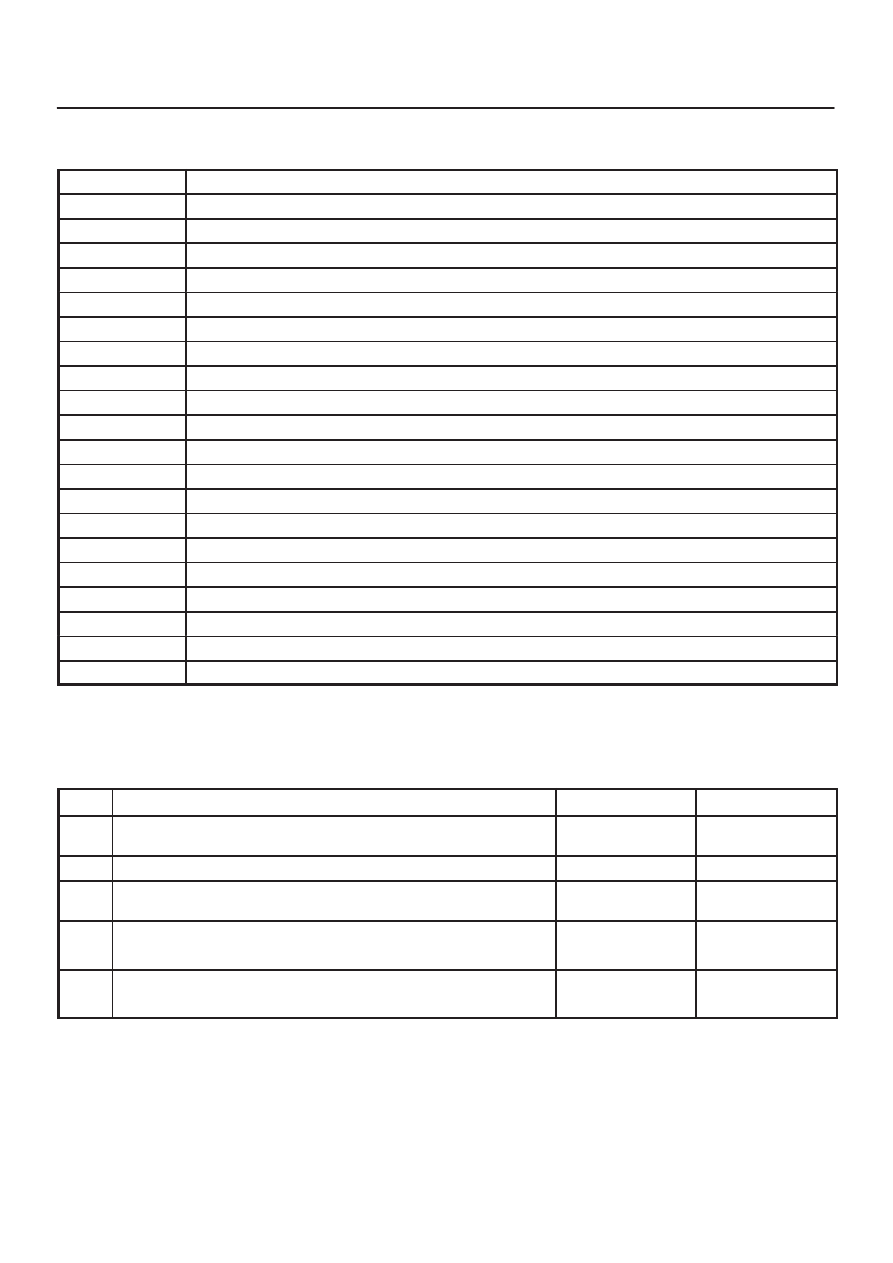Opel Frontera UBS. Manual - part 536

7A–13
AUTOMATIC TRANSMISSION (4L30–E)
Mechanical / Hydraulic Diagnosis Symptoms Index
Perform Preliminary Inspection First!
CHART
SYMPTOMS
1
NO ENGINE START IN NEUTRAL OR PARK
2
NO FORWARD GEARS IN ANY RANGE/NO REVERSE
3
NO ENGINE BRAKE IN ANY RANGE
4
POOR SHIFTING IN ALL GEARS (ALL HARSH OR ALL SOFT)
5a
DELAYS IN DRIVE AND REVERSE
5b
DELAYS IN REVERSE ONLY
6
DIAGNOSTIC TROUBLE CODE (DTC) P0730
7
HARSH 1–2 SHIFT
8
HARSH 3–4 SHIFT
9a
3–2 DOWNSHIFT COMPLAINT
9b
HARSH SHIFT WHEN SHIFTING INTO “D” OR ACCELERATING FROM STOP
9c
COASTDOWN HARSH SHIFT OR CLUNK AT 3–2 DOWNSHIFT
10
INTERMITTENT 4TH TO 2ND GEAR DOWNSHIFT AT STEADY SPEED
11
ENGINE FLARE AT SHIFTING DURING TURNING ONLY
12
ENGINE FLARE DURING 1–2 OR 2–3 SHIFT
13
SHUDDER ONLY DURING TORQUE CONVERTER CLUTCH (TCC) APPLYING
14
POSSIBLE CAUSES OF TRANSMISSION NOISE
15a
POSSIBLE CAUSES OF LOW LINE PRESSURE
15b
POSSIBLE CAUSES OF HIGH LINE PRESSURE
16
POSSIBLE CAUSES OF TRANSMISSION FLUID LEAKS
NOTE: Numbers with parenthesis on the following charts
refer to Parts List at end of this section.
Chart 1: No Engine Start In Neutral Or Park
Step
Action
Yes
No
1
Does engine start when shift lever moved from drive to neutral
mostly in hot condition?
Go to Step 2
Go to Step 3
2
Does engine start in park at any condition?
Re–test vehicle
Go to Step 4
3
Does engine also not start in neutral when shift lever moved from
park to neutral?
Go to Step 4
Go to Step 5
4
Check mode switch (63) setting. Readjust if necessary.
Problems fixed?
Re–test vehicle
Go to Step 5
5
Check start circuit of mode switch (63) open in neutral.
Was open found?
Locate and repair
open(s)
Replace mode
switch (63)